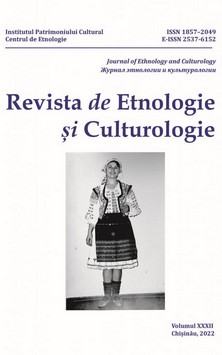ELEMENTE ISTORICO-ETNOGRAFICE ALE BISERICII „NAȘTEREA MAICII DOMNULUI” DIN LOCALITATEA BRĂNEȘTI, RAIONUL ORHEI
HISTORICAL-ETHNOGRAPHIC ELEMENTS OF THE CHURCH “THE NATIVITY OF THE MOTHER OF GOD” IN BRĂNEȘTI, ORHEI DISTRICT
Author(s): Sergiu SuvacSubject(s): Architecture, History of Church(es), Local History / Microhistory
Published by: Institutul Patrimoniului Cultural al Academiei de Științe a Moldovei
Keywords: Church; architecture; history; ethnography; bell tower; stone pillars;
Summary/Abstract: The Church of the Nativity of the Mother of God in Brănești, Orhei district, built between 1911–1928, is located not far from the center of the village. There is a cemetery around it, where very old Moldovan families can be found, but also a place where Germans were buried after a bloody battle during the Second World War. The church is built of stone extracted from the limestone mines on the outskirts of the village. It represents a Russian architectural style, combined with traditional Moldovan motifs and ornaments. The axial-longitudinal plan of the church is composed of three parts: the square vestibule (narthex), the central rectangular nave and the faceted altar. A two-tiered belfry rises above the pronaus of the Church, which is the main compositional focus of the ecclesiastical complex. The sides of the belfry are enriched with arched openings, and the crowning part of the belfry is represented by a tetrahedral geometric element with a spacious dome. The laconic, even dry interpretation of the volume of the building is enriched with decorative elements, and attention is paid to the entrance to the Church yard. At the entrance to the Church, a profiled arch and a triangular pediment are carved in stone above the door.
Journal: Revista de Etnologie şi Culturologie
- Issue Year: XXXII/2022
- Issue No: 2
- Page Range: 125-129
- Page Count: 5
- Language: Romanian

